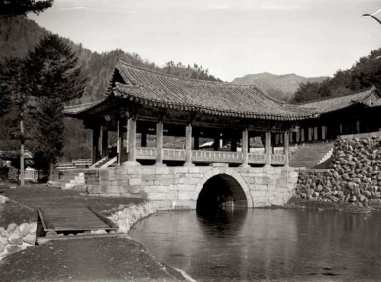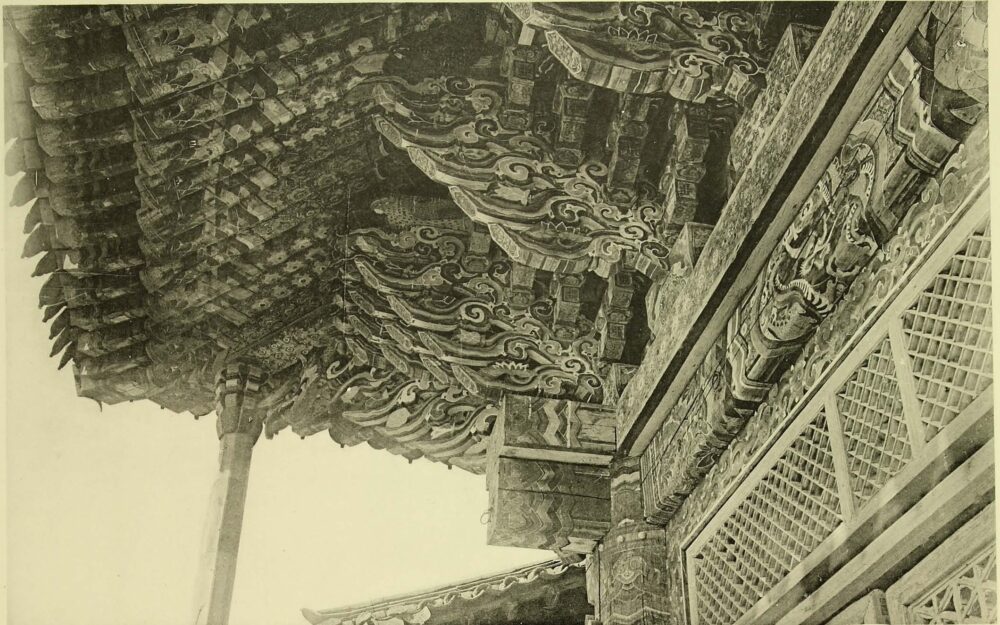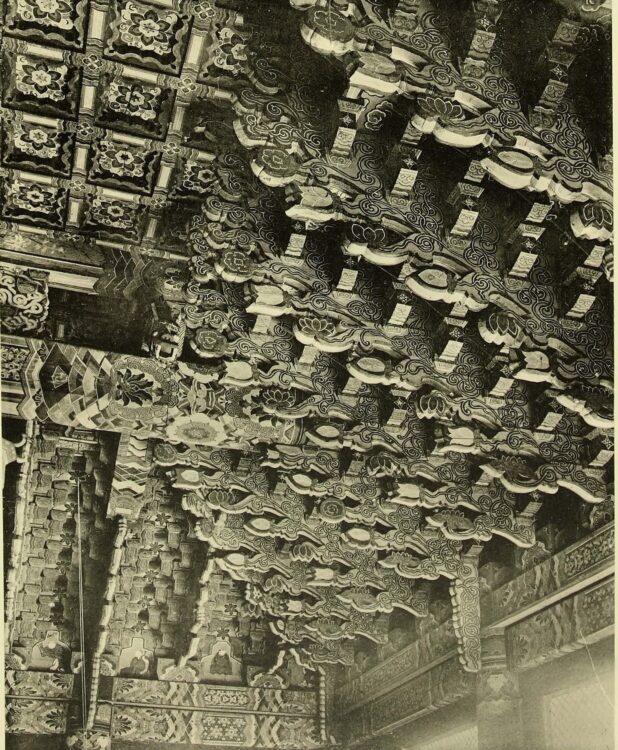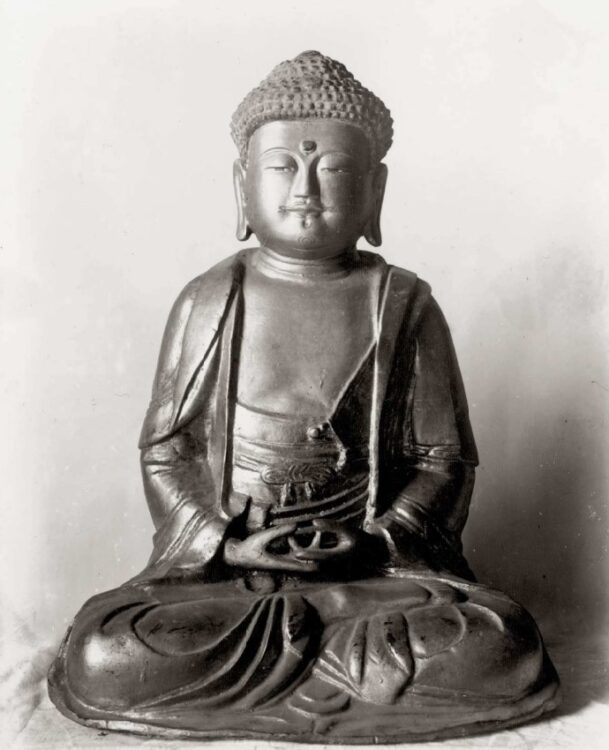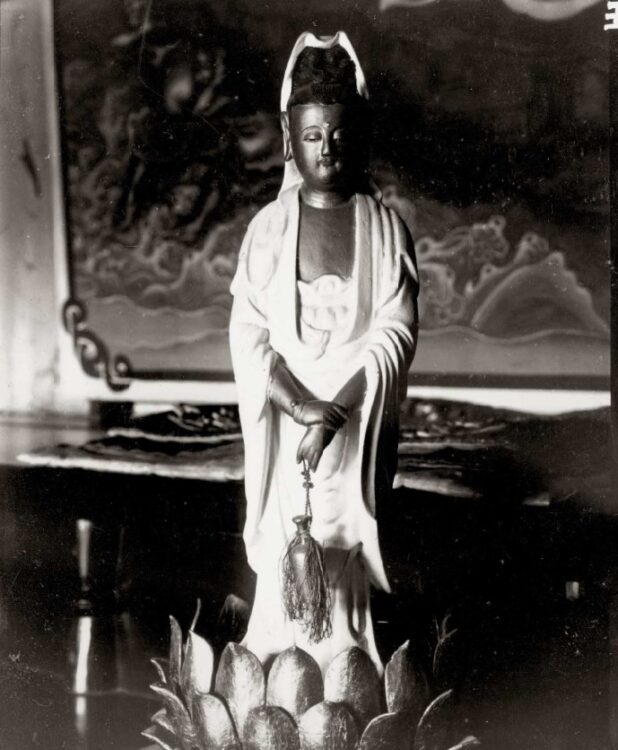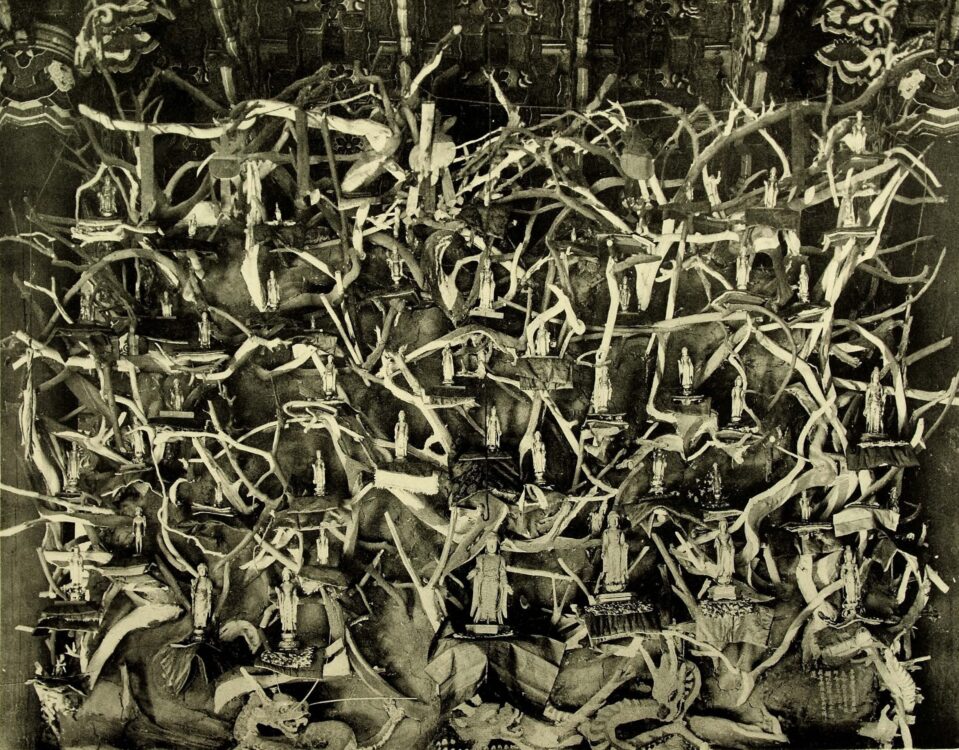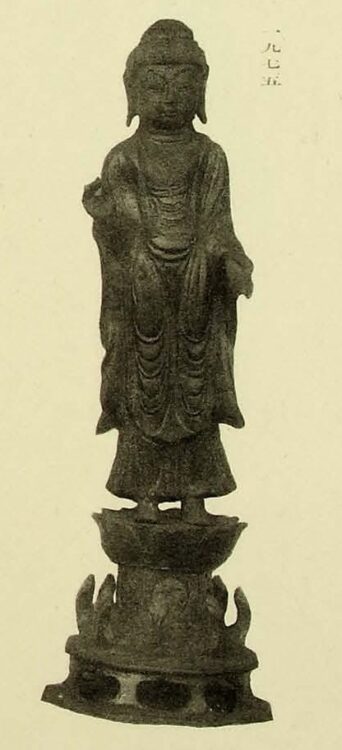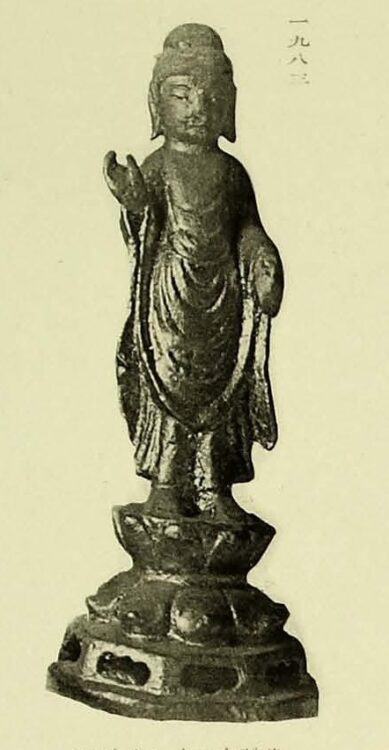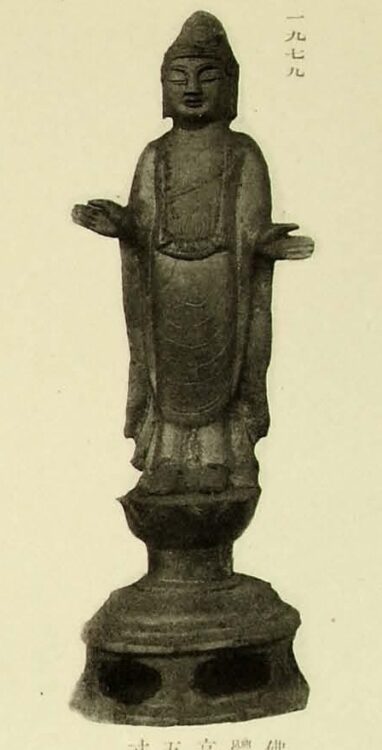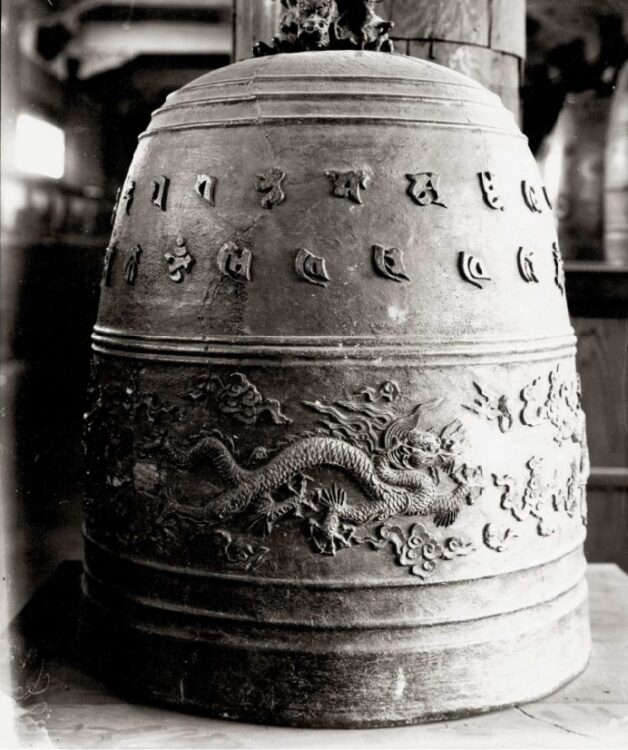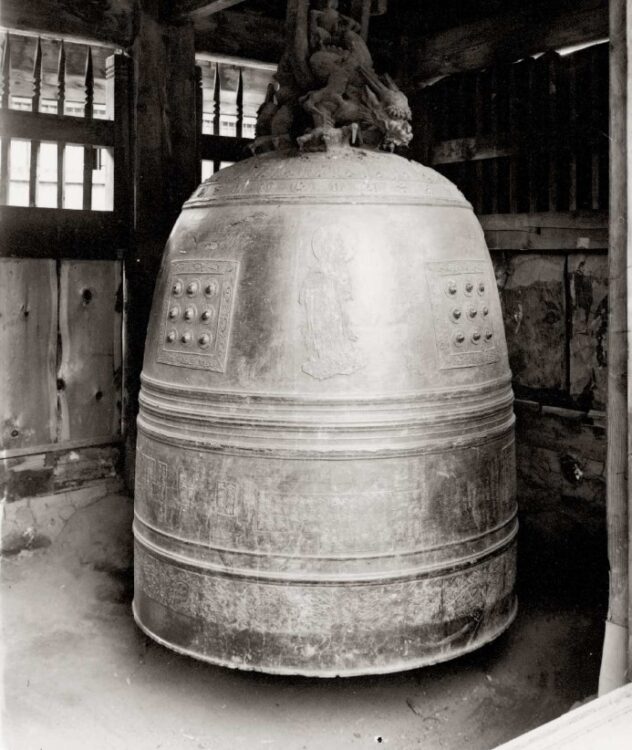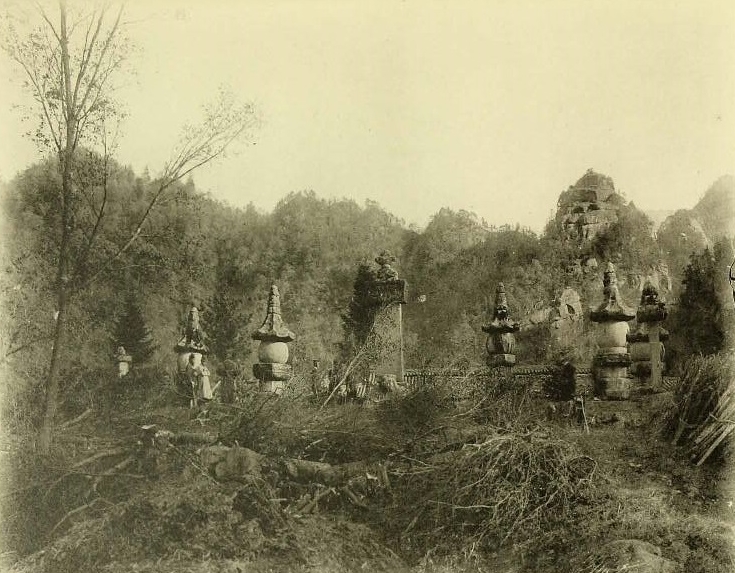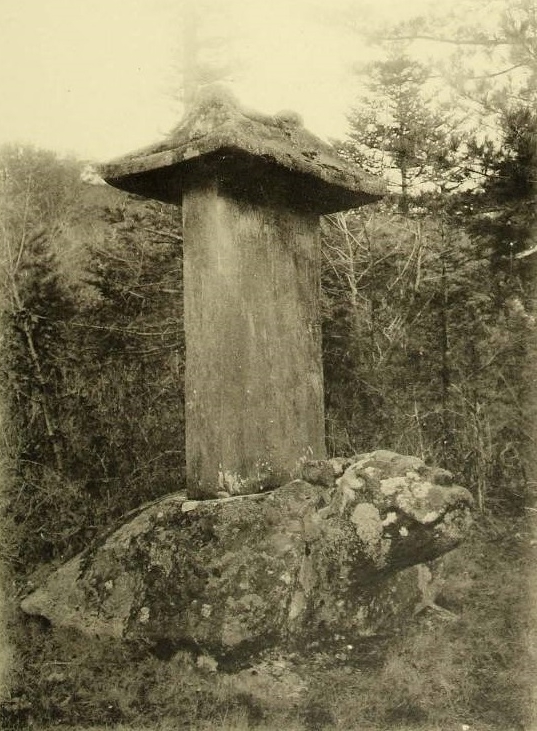Yujomsa Temple – 유점사 (Kosan, Kangwon-to, North Korea)

Temple Myth
This temple post is a little different than others in that the temple no longer exists. However, because of its historical significance, and with it being in North Korea, I decided to do a post on it. And it should be noted, before I get too far ahead of myself, that this article will largely use the North Korean spelling of locations. Now, with all that being said, Yujomsa Temple [Yujeomsa Temple] has one of the more interesting temple myths associated with it.
Rather strangely, and according to “Saji,” a historical document, Yujomsa Temple [Yujeomsa Temple] was first founded in 4 A.D., which is rather odd since Buddhism first officially entered into the Goguryeo Kingdom (37 B.C. – 668 A.D.) in the year 372 A.D. Now, as for the myth, it centres around Yujomsa Temple and 53 Buddha statues. According to a Goryeo Dynasty (918-1392) historical document, after Seokgamoni-bul (The Historical Buddha) entered Nirvana, the people in Sawi castle (in the middle region of India) were very sad because they couldn’t see or visit Seokgamoni-bul while he was alive. So because they couldn’t meet Seokgamoni-bul (The Historical Buddha), they decided to gather gold to make 53 statues of the Buddha. When they did this, they floated these statues on a boat, hoping that they could also enter into Nirvana.
This boat drifted around with a dragon as a guide. The boat would eventually land at Woljiguk (historians believe this now to be apart of Chungcheongnam-do). And the king would not only worship these 53 Buddha statues, but he also built a shrine for them. But for whatever reason, this shrine burnt down. So the king wanted to build a new shrine for these 53 Buddha statues, again. However, one night, while dreaming, the Buddha, Seokgamoni-bul, came to the king. In this dream, Seokgamoni-bul said, “I’m going to leave this country, so don’t try to build a new shrine.” Instead, what the king did was build a new boat for these 53 statues of Seokgamoni-bul, and he set sail to them, once more.
This boat would float around the seas and oceans for 900 years. Eventually, it would arrive at the Silla Kingdom (57 B.C. – 935 A.D.). A Silla court official then went out to see this miraculous boat. When he arrived, he looked inside the boat. When he did, he found that the 53 statues of the Buddha, Seokgamoni-bul, had all disappeared. Instead, what he found were leaves along the beach that led towards Mt. Kumgangsan [Mt. Geumgangsan].
So this official walked towards Mt. Geumgangsan. Along the way, a white dog appeared, so the official followed the dog. While he was walking, the official found a zelkova tree. And under this zelkova tree, the 53 Buddha statues were discovered. These were the very same statues that had been launched centuries ago from India. Hearing this, the king built a temple where they were found. This temple would be Yujomsa Temple [Yujeomsa Temple].
After Korea regained its independence from Japanese Colonial Rule (1910-1945), it was revealed that three of the 53 Buddha statues were missing. Then during the Korean War (1950-1953), all of the remaining 50 were destroyed.
Temple History
Yujomsa Temple [Yujeomsa Temple] was located in Kosan [Gosan], Kangwon-to [Gangwon-do], North Korea. It was the largest of the four major temples around Mt. Kumgangsan [Geumgangsan] (1638 m). Yujomsa Temple [Yujeomsa Temple] was first founded during the 6th century as part of the Silla Kingdom (57 B.C. – 935 A.D.). Throughout its long history, Yujomsa Temple underwent several renovations and enlargements. One of the more major enlargements of the temple took place in 1168 under King Uijong of Goryeo (r. 1146-1170). There would be subsequent work conducted on Yujomsa Temple [Yujeomsa Temple] in the 15th century, which would help the temple grow even larger in size.
During the Imjin War (1592-1598) against the invading Japanese, Yujomsa Temple was used as a base for the Righteous Army led by Samyeong-daesa (1544-1610). Eventually, and alongside Changansa Temple [Jangansa Temple], Pyohunsa Temple [Bohyeonsa Temple], and Singyesa Temple, the four temples would become known as the Four Great Temples of Mt. Kumgangsan [Geumgangsan]. Of the four, Yujomsa Temple was the largest and oldest. In total, Yujomsa Temple [Yujeomsa Temple] would grow to include some forty buildings. And between 1833 to 1885, Yujomsa Temple [Yujeomsa Temple] would undergo its final expansion.
During Japanese Colonial Rule (1910-1945), Mt. Kumgangsan [Mt. Geumgangsan] became a popular tourist site for the Japanese. And Yujomsa Temple, which was known as Yusen-ji Temple in Japanese, was one of the most popular destinations for travelers to Mt. Kumgangsan. Because of its popularity, Yujomsa Temple received additional funding to restore the temple during Japanese Colonial Rule. Additionally, Yujomsa Temple was one of the 31 headquarters for the nationwide organization of Korean Buddhist temples by the Japanese. And it oversaw the management of some 60 branch temples. At this time, Yujomsa Temple [Yujeomsa Temple] consisted of a Sanyeong-ru Pavilion, a Neunginbo-jeon Hall, a Sanshin-gak Hall, a nine-story pagoda, and dorms.
Despite its historical significance, however, Yujomsa Temple was bombed by the U.S. military during the Korean War (1950-1953). It was believed that the Korean People’s Army (North Korean Army) was using Yujomsa Temple as a base. As a result, Yujomsa Temple was bombed and nothing remains of the temple except for the temple’s foundation stones and the Joseon-era (1392-1910) bronze bell that was moved to Pohyunsa Temple [Bohyeonsa Temple] on Mt. Myohyangsan.
How To Get There
Unfortunately, you can’t. The temple simply no longer exists. But for now, all that remains of this once famous temple are the foundation stones and the temple bell at Pohyunsa Temple [Bohyeonsa Temple].
Overall Rating: 3/10
Unfortunately, Yujomsa Temple [Yujeomsa Temple] no longer exists. Just like Mireuksa-ji Temple Site in Iksan, Jeollabuk-do and Hwangnyongsa-ji Temple Site in Gyeongju, very little of the temple outside the foundation stones still exist. And for that reason, it rates as low as it does. However, it still is North Korea, and there is still hope that one day, like the neighbouring Singyesa Temple, Yujomsa Temple will be restored. Here’s to hoping!
Historical Pictures of Yujomsa Temple


